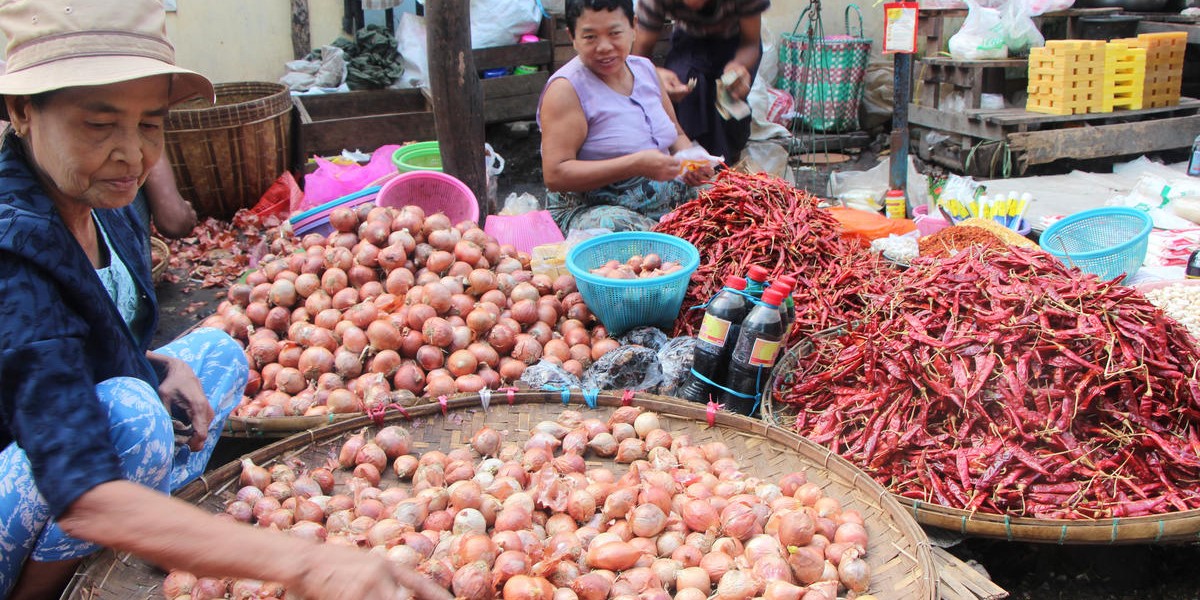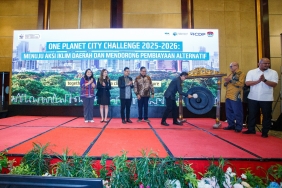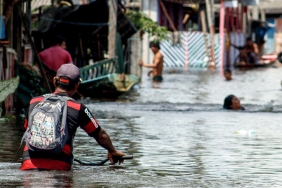WHAT IS CLIMATE CHANGE...?
Sukirman (52), an onion farmer in Bulakamba, Brebes Regency, Central Java, cannot understand. It is already July, but it is still raining. In fact, July is usually the dry season and it rarely rains.
During the dry season, shallot farmers usually enjoy a happy period because productivity reaches its highest point, 12-14 tons per hectare. Drying shallots also only takes five days because the onions are already dry and can be stored for a long time.
""However, this is not the case now,"" said Sukirman.
In July, it was still raining, so the productivity of shallot plants plummeted to only 6-7 tons per hectare. Various pests and plant diseases also attacked a lot. In addition, due to frequent rains, the drying time of shallots was delayed to 10-14 days. Automatically, the wage for drying also swells. ""I don't know why, the weather is so unpredictable,"" said Sukirman in confusion.
Sukirman is not the only one who is confused. Karna {45), a farmer in Pegaden Subdistrict, Subang Regency, West Java, also could not understand. This July, which is supposed to be the gadu (dry) season, in fact, it is still raining frequently. Occasionally the sun shines brightly, then it rains heavily.
""If it's hot and rainy ... hot and rainy again ..., usually the leafhoppers attack a lot,"" said Karna.
He also now has to experience, the leafhopper pests began to attack his rice plants. ""Usually, September, October, November, and December are the rainy season. But now, July is already raining,"" he said.
When a student who was doing field practice in Brebes Regency told Sukirman that there was now climate change due to global warming, Sukirman looked away. He was confused. ""Climate change is what...?"" he said innocently.
Field extension worker
When the New Order was in power, the government's attention to farmers was quite high Field extension officers often provided information to farmers ranging from when to plant, water turn, how to eradicate pests, form farmer groups, to introduce new varieties of rice plants. Now this is no longer the case
Practically no more field extension officers go to the villages. Farmers are also left to find information on their own, ranging from fertilizer prices, pests that attack rice plants, to weather forecasts Because the information channel is cut off, global phenomena about climate change also do not reach farmers.
It is not strange that, for example, during the wet dry season like now, farmers still plant secondary crops-such as onions and red chilies-which are vulnerable to the weather Farmers are forced to plant secondary crops because most of their land is rented Farmers feel that they lose if the land they rent is only used for two crops a year. When they know the rain is still falling with high intensity, they insist on planting secondary crops The results are predictable; low productivity and the threat of pests and the risk of failure are high.
""One cabbage, which used to weigh 3 kilograms, is now only 0.5-0.8 kilograms,"" said Surame Hadisutik-no, supervisor of the Merbabu Farmers Association in Magelang district.
Curly chili production, which used to be 12-15 tons per hectare, is now only 7-9 tons per hectare.
The 2,000 square meters of chayote, which usually produces about 9 quintals, in Magelang now only produces about 1.2 quintals. ""The influence of weather is very big on agriculture,"" said Suhartono, Head of Ngablak Village in Ngablak District, Magelang.
Run to the city
Failure after failure has forced a number of farmers to leave their cultivated land. They are desperate to go to the city, looking for income by doing odd jobs.
""About 60 percent of farmers here went to the city after the leafhopper pest became rampant and difficult to control,"" said Didit Ariyanto, an organizer of the Lestari Farmer Group, Kebon Agung Subdistrict, Demak Regency.
Head of the Central Java Agriculture, Food Crops and Horticulture Agency Aris Budiono said that the eradication of leafhoppers is indeed difficult to control in the current weather anomaly.
Some farmers have also tried to plant other crops after their fields were attacked by leafhoppers. However, their efforts still failed.
""The land is too wet because the rainfall is very high,"" said Kardiono, the Daily Executive of the Central Java Executive Board of the Indonesian Farmer Harmony Association, giving an excuse.
The high rainfall also caused farmers in South Kalimantan who usually plant rice in lebak swamp areas to plant rice late.
""Only now, when the rains are less frequent and the lebak swamp water recedes, we can plant rice,"" said Udin (42), a farmer from Maharuangan, Sungai Raya District, Hulu Sungai Selatan Regency.
Sriyono, Head of the Agriculture, Food Crops and Horticulture Agency of South Kalimantan Province, said that the high rainfall also caused the area of rice crops to be not optimal. South Kalimantan has about 500,000 hectares of rice fields, with 100,000 hectares of them being lebak swamp land. However, due to high rainfall, for the current season only about 80,000 hectares can be planted.
Climate change has changed everything. Only the attitude of the bureaucracy and society has not changed....
(WHO/MKN/WER/HAN/ EGI/THY)





